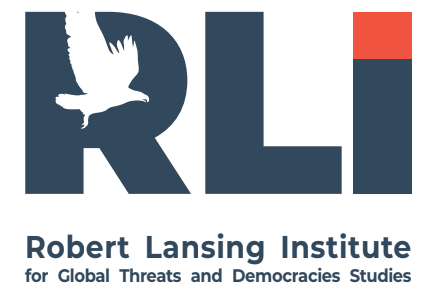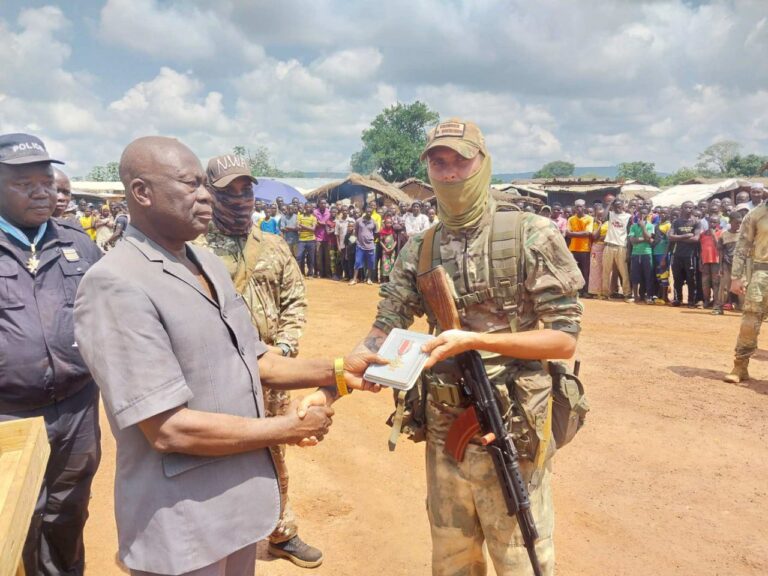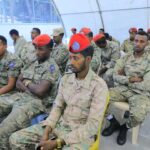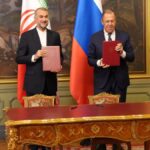The recent wave of protests across the Central African Republic (CAR) reflects growing public outrage at the continued presence and influence of Russian mercenaries, particularly the Wagner Group. Sparked by reports of arbitrary killings, sexual violence, and looting by Wagner fighters, these demonstrations highlight a broader crisis: the normalization of war crimes and impunity for violence against civilians.
Wagner’s tactics in CAR closely mirror their operations in Mali, Sudan, Libya—and even more starkly, in Ukraine. These parallels reveal a deliberate pattern of coercive violence used to maintain influence, extract resources, and enforce political loyalty to Moscow’s geopolitical goals.
II. Background: Wagner in the CAR
Since 2018, the Wagner Group has played a pivotal role in propping up President Faustin-Archange Touadéra, under the guise of protecting state sovereignty and combating rebel groups. In exchange, Wagner-linked entities gained access to gold, diamonds, and timber concessions.
However, their involvement quickly escalated into systemic human rights abuses. UN reports, NGOs, and local media have documented:
- Massacres of civilians, particularly in rebel-held areas;
- Extrajudicial executions, often with torture;
- Sexual violence, including rape as a weapon of intimidation;
- Forced displacement of entire communities near mining sites.
III. Civilian Protests: Breaking the Silence
Despite repression, recent protests in Bangui and other towns are significant for several reasons:
- Local resistance is growing against what is increasingly seen as foreign occupation.
- Families of victims are demanding justice, accountability, and the expulsion of Wagner mercenaries.
- The protests also reflect a loss of legitimacy for President Touadéra, who is now viewed as dependent on Russian protection to retain power.
IV. The Pattern: From CAR to Ukraine
The brutality in CAR is not an isolated phenomenon. The same Wagner units and command structures have operated in:
- Mali, where they were involved in the Moura massacre (2022) with over 500 civilian deaths.
- Libya, accused of booby-trapping homes and executing prisoners during Haftar’s campaign.
- Sudan, where Wagner-backed groups armed militias responsible for ethnic cleansing in Darfur.
- Ukraine, particularly in Bucha, Mariupol, and Soledar, where Wagner was accused of executing civilians, using human shields, and employing terror tactics.
These actions reveal a deliberate strategy of collective punishment, aimed at subduing populations, discrediting opposition forces, and securing resource corridors.
V. Why Does Wagner Target Civilians?
Several core factors explain this recurring brutality:
1. Strategy of Terror
Wagner employs violence not just for military gain but as a psychological weapon. Intimidation ensures compliance from both governments and local populations.
2. No Oversight or Accountability
Wagner operates in legal gray zones, often shielded by authoritarian governments and supported by the Kremlin’s geopolitical objectives. This impunity enables repeated war crimes.
3. Resource Control
Civilians are frequently displaced or eliminated near resource-rich areas, clearing the path for exploitation by Wagner-linked firms.
4. Export of Russian Military Doctrine
Wagner mirrors Russian counterinsurgency methods used in Chechnya and Syria: heavy-handed repression, scorched-earth tactics, and disregard for civilian life.
VI. International Implications
- Reputational Costs for Russia: While Wagner offers plausible deniability, increasing documentation links these atrocities directly to the Russian state.
- Destabilization of Africa: Wagner’s presence prolongs conflict, undermines democracy, and erodes international peacekeeping efforts.
- Accountability Challenges: CAR and other host countries rarely have the legal capacity or will to prosecute foreign mercenaries. International courts face hurdles due to Russia’s veto power and geopolitical divisions.
VII. Conclusion and Recommendations
The protests in CAR are not just about Wagner—they are a cry against a broader system of foreign predation, impunity, and betrayal by national elites. The international community must:
- Support local civil society and independent media in exposing abuses;
- Expand sanctions on Wagner-linked companies and operatives;
- Strengthen UN mechanisms to investigate and prosecute war crimes;
- Assist African states in building legal frameworks to hold mercenaries accountable.
Wagner’s violence is not just a feature of war—it is a business model. Unless disrupted, the cycle of impunity will continue to threaten civilians across Africa and beyond.
Why Does Wagner Target Civilians? Structural and Strategic Logic of Violence
The use of indiscriminate violence against civilians by the Wagner Group in the Central African Republic (CAR) follows a broader historical pattern found in several modern conflicts. While such acts are often perceived as senseless brutality, they are in fact part of a calculated military and political strategy with specific goals. Below are the core reasons Wagner and similar actors target civilians, followed by international precedents that echo this logic.
1. Strategy of Control through Fear (Terror as Governance)
Violence against civilians is frequently employed as a form of territorial control, especially in environments where state institutions are weak. By targeting civilians—particularly those in areas suspected of rebel support—Wagner imposes a climate of fear, undermining resistance and enforcing submission.
This mirrors tactics used by:
- The Janjaweed in Darfur (Sudan) – Sudanese government-backed militias used mass killings, rapes, and village burnings to terrorize ethnic communities perceived as sympathetic to insurgents.
- The Guatemalan military during the Civil War (1980s) – The state used “scorched earth” tactics against indigenous populations, assuming their support for leftist rebels.
- The Russian Army in Chechnya (1990s–2000s) – Mass atrocities, including the bombing of Grozny and filtration camps, were designed to break civilian morale and sever ties between insurgents and the population.
In Wagner’s case, similar “punishment operations” are deployed in zones of mineral extraction (e.g., gold-rich regions in CAR and Mali), where civilians are seen either as obstacles to economic control or potential collaborators with hostile forces.
2. Extraction and Exploitation: Violence as an Economic Instrument
Wagner’s operations serve not only Russian strategic interests but also the economic agendas of private and state-linked actors. Civilians in mining regions are often forcibly displaced, intimidated, or killed to ensure unobstructed access to valuable resources.
Parallel examples include:
- Blood diamond conflicts in Sierra Leone and Liberia (1990s–2000s) – Rebel groups like the RUF used mass violence to seize control of diamond-rich territories, funding their war effort and enriching elites.
- ISIS in Syria and Iraq (2014–2017) – ISIS exploited oil fields and antiquities, often clearing civilian populations through massacres or forced migration to secure control of resources.
- South Sudan Civil War (post-2013) – Government and rebel forces both targeted civilians in oil-producing regions to secure revenue and deny it to the opposition.
In CAR, Wagner’s actions around gold mines in Ndassima and Bria follow this template: civilians are removed, and resources are extracted through local shell companies tied to Russian entities.
3. Weak States and Legal Impunity
In fragile or authoritarian regimes, the lack of rule of law allows foreign forces like Wagner to act with impunity. Governments that invite them in often depend on their protection and therefore cannot or will not prosecute abuses.
Historical analogues include:
- French colonial suppression in Algeria (1950s) – Torture, mass killings, and disappearances were widely used by the French military, with little oversight from the metropole.
- U.S.-backed death squads in Latin America – In El Salvador and Colombia, anti-communist paramilitary groups conducted massacres with impunity under the banner of counterinsurgency.
- Rwandan Patriotic Army in DRC (post-1996) – Units loyal to Kigali committed mass atrocities in eastern Congo to suppress Hutu militias and seize mineral areas, shielded by geopolitical alliances.
In the modern context, Russia exploits sovereignty loopholes, operating Wagner as a “deniable” force to shield the Kremlin and host governments from direct accountability.
4. Export of Russian Military Doctrine
Wagner’s conduct echoes Russia’s own counterinsurgency model, particularly from Chechnya and Syria, which emphasizes brute force, collective punishment, and urban destruction over precision or hearts-and-minds tactics. This doctrine prioritizes deterrence through devastation.
- In Syria, Russia targeted hospitals, bakeries, and civilian convoys as part of its military strategy to weaken morale and support for opposition groups.
- In Ukraine, Wagner and other Russian units have committed acts in Bucha, Mariupol, and Soledar that include execution of civilians, booby-trapped homes, and torture—all documented by international monitors.
This model sees civilians not as protected non-combatants, but as instruments or obstacles in achieving military dominance and political submission.
Conclusion: Weaponizing Civilians as a Tool of Political War
Across CAR and other conflict zones, Wagner’s approach fits into a broader pattern of strategic violence that blends military goals, economic interests, and political intimidation. Their operations align with historical examples of state and non-state actors deliberately using civilian targeting as a tactic—not despite its brutality, but because of its effectiveness in achieving short-term control and long-term instability that favors authoritarian or extractive agendas.
Unless there is meaningful accountability, disruption of the economic pipelines, and reinforcement of civilian protection norms, such violence will persist—and may even spread.
it is increasingly accurate to describe Russia’s activities in Africa—particularly through the Wagner Group and its successor networks—as a form of neocolonial policy. While the Kremlin often presents itself as an anti-colonial partner to African states, its actions reflect core characteristics of classical colonial behavior, especially in the following dimensions:
1. Exploitation of Natural Resources Without Local Benefit
Russian-linked companies operating under Wagner’s security umbrella (e.g., Meroe Gold in Sudan, Lobaye Invest in the CAR, and similar entities in Mali) extract gold, diamonds, and other minerals with minimal reinvestment into local economies.
Example:
In the Central African Republic, Wagner-controlled mines are heavily guarded, and profits are funneled to Russian elites or used to finance Kremlin-aligned operations. Local populations are often displaced, unpaid, or terrorized into submission—mirroring historical colonial patterns of resource extraction.
2. Use of Military Force to Secure Economic and Political Dominance
Argument:
Wagner provides personal protection for heads of state (e.g., Faustin-Archange Touadéra in CAR) and suppresses domestic opposition or rebel forces not in defense of sovereignty, but to protect Russian interests in the region.
Parallel to colonial history:
European colonial powers historically employed “private armies” or foreign legions to control native populations and maintain access to critical resources.
Modern form:
Wagner acts like a colonial gendarmerie—unaccountable, foreign, and primarily loyal to its sponsor rather than the host nation’s population.
3. Political Influence and Puppet Governance
Argument:
Russia supports and sometimes engineers constitutional changes, electoral interference, or information operations to entrench friendly autocratic regimes.
Example:
Russian political technologists have run disinformation campaigns, fake election monitoring missions, and constitutional referendums to help allies stay in power—especially in CAR, Mali, and Sudan.
Parallel:
This mimics the colonial practice of indirect rule, where European powers kept pliable elites in power to ensure compliance with colonial goals.
4. Cultural and Ideological Justification for Domination
Argument:
Russia’s anti-Western propaganda in Africa mirrors colonial rhetoric by framing its presence as “civilizational,” anti-imperialist, and protective—despite engaging in exploitative behavior.
Examples:
- Russian media (like RT and Sputnik) and Wagner-linked outlets spread narratives of “resistance to Western neocolonialism,” positioning Moscow as a liberator.
- This is a psychological inversion of colonial “white man’s burden” rhetoric—replacing it with the image of Russia as the “true ally of African sovereignty,” even while undermining it.
5. Undermining Sovereignty Through Dependency
Argument:
African regimes reliant on Russian military and political support lose control over security policy, natural resources, and foreign relations.
Outcome:
These states often cannot remove Wagner without risking a coup or security vacuum—a clear symptom of lost sovereignty.
Example:
In Sudan and Mali, local forces became dependent on Russian-trained units and advisors, reducing their autonomy and aligning national security with Moscow’s interests.
A Modern, Covert Colonial Model
Rather than formal colonization, Russia employs a “shadow empire” strategy in Africa—using mercenaries, extractive companies, propaganda, and elite capture to achieve the same outcomes once secured through colonial conquest: resource control, political influence, and military dominance.It is neocolonialism without the flag, but with all the core components: domination without development, order without justice, and sovereignty without autonomy.
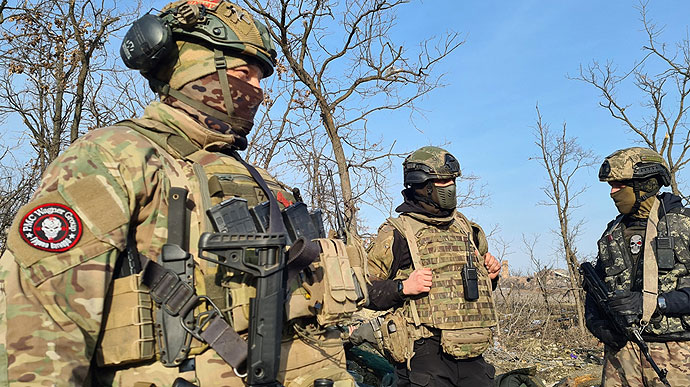
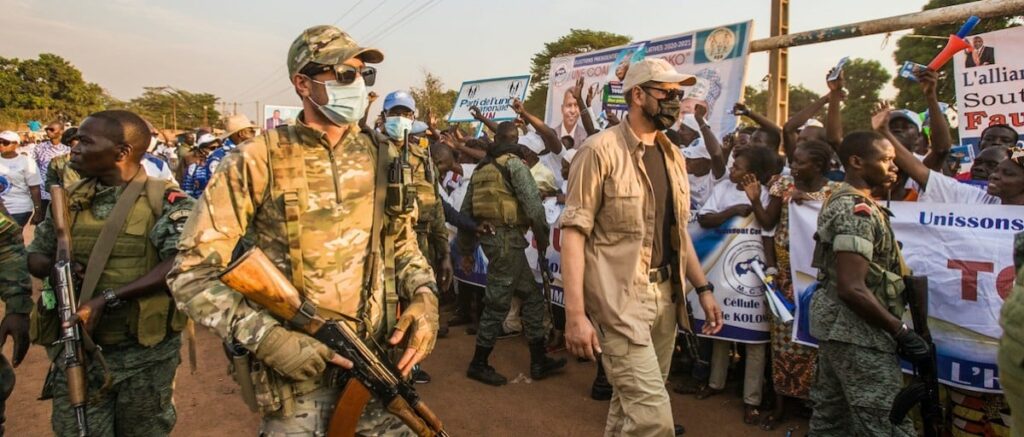
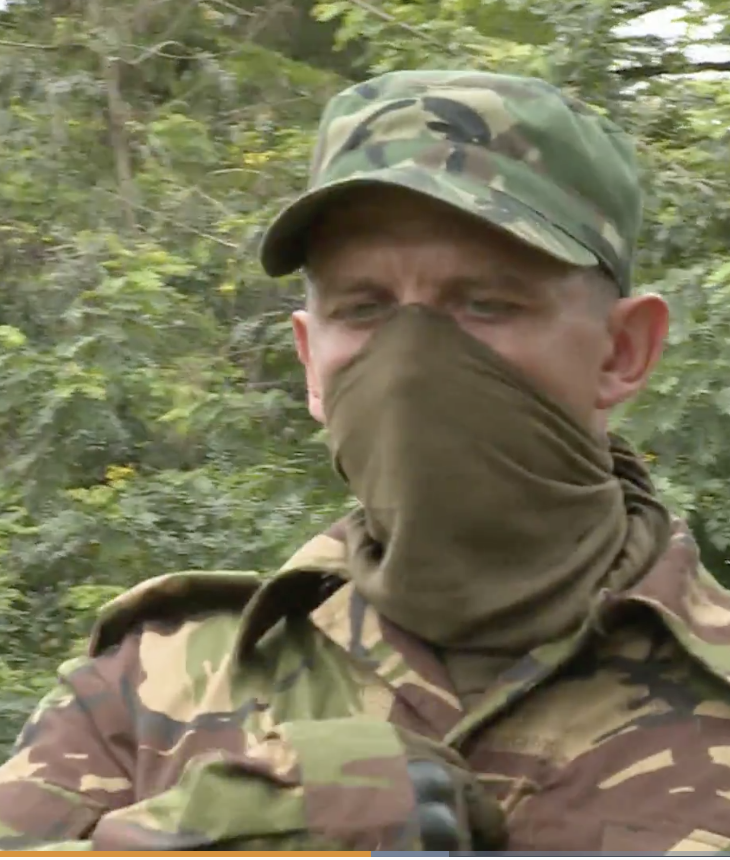
More on this story: Russian mercenaries have a hand in war crimes in CAR
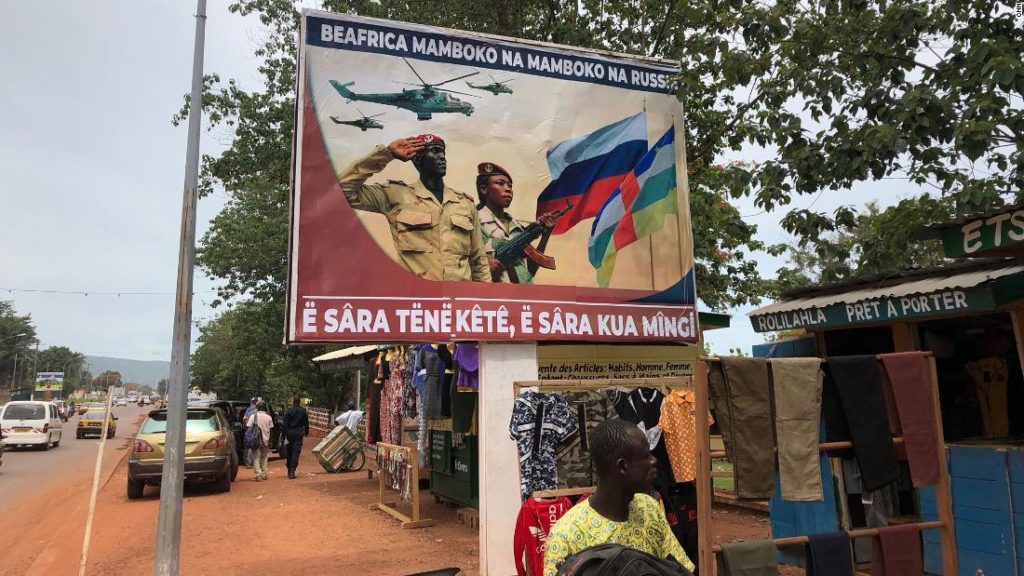
More on this story: The Kremlin-affiliated Russian mercenaries are behind war crimes in the CAR

More on this story: Government reshuffle in Bangui to confirm Moscow’s growing sway
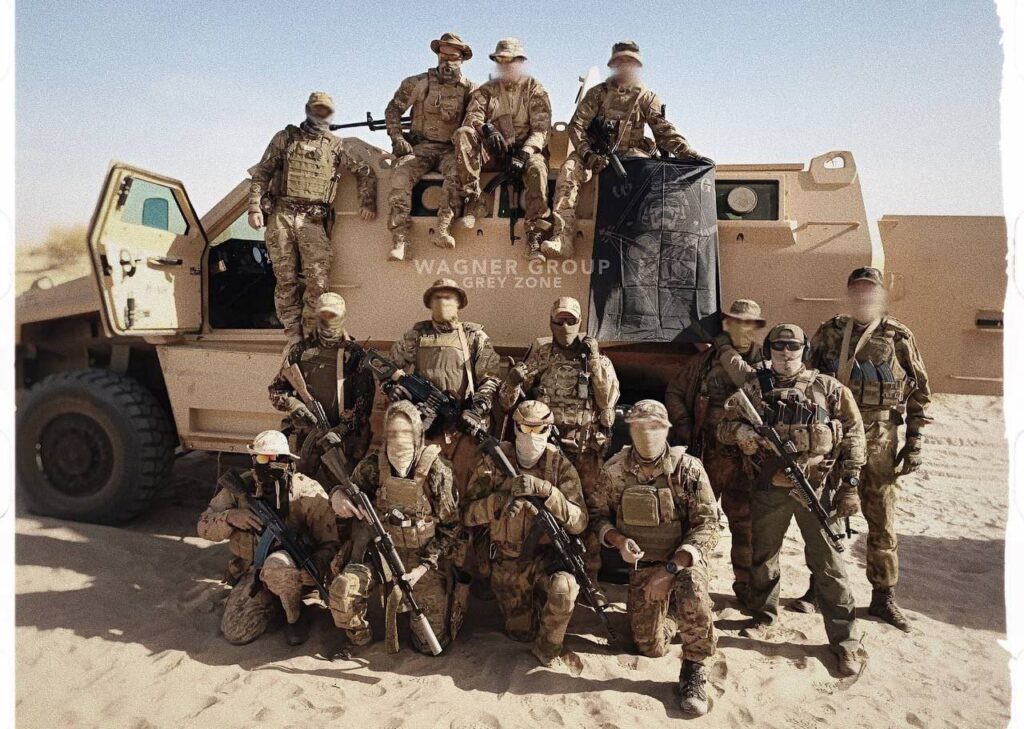

More on this story: Russia’s war crimes reflect population’s morality lows
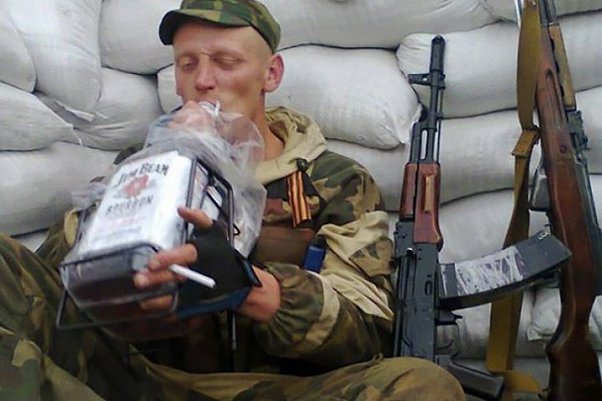
More on this story: War crimes to reflect the essence of Russians
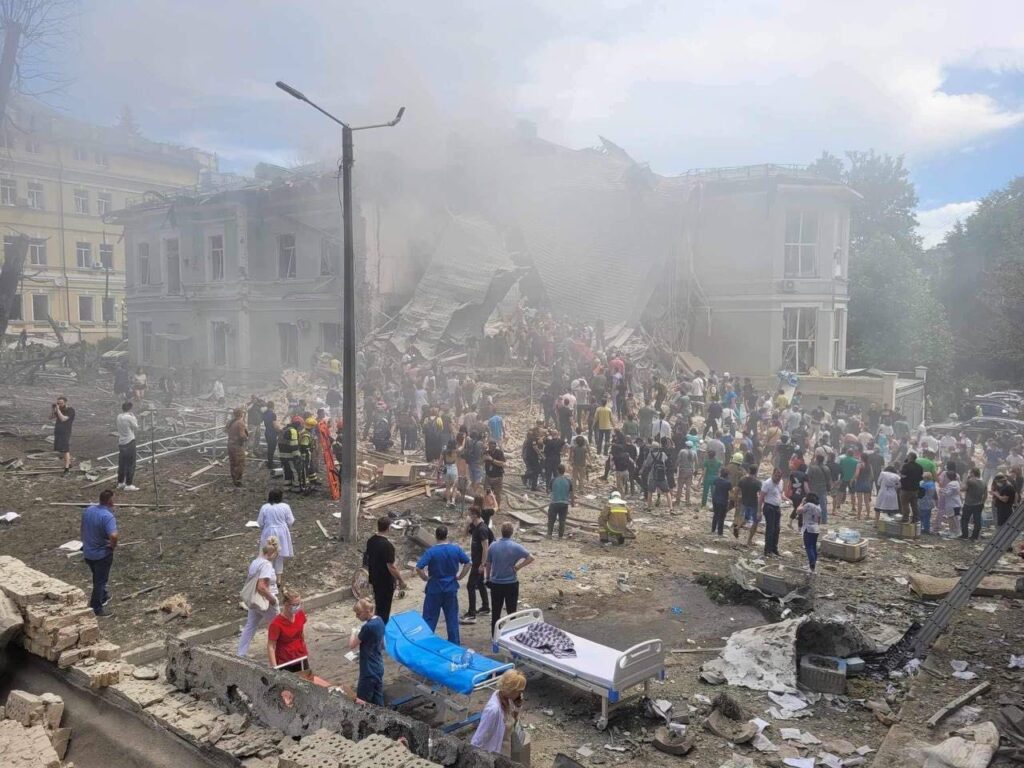
More on this story: Strikes on medical facilities become part of Russia’s military strategy
